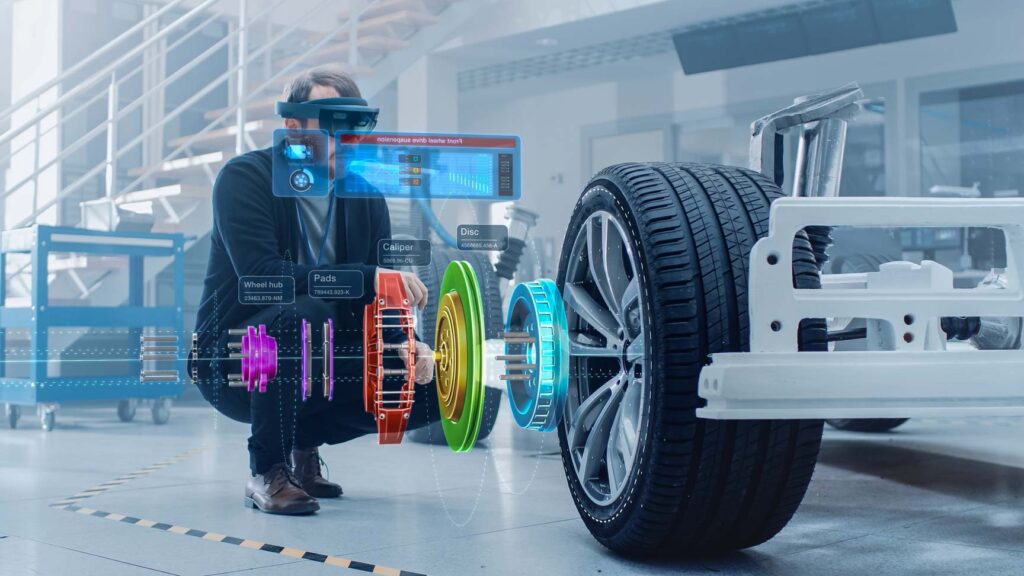Regenerative Braking Explained: How It Works in EVs and Hybrids
Regenerative braking is a revolutionary technology that plays a crucial role in the efficiency of electric vehicles (EVs) and hybrids. This system not only enhances the driving experience but also significantly contributes to energy conservation.

This article explores how regenerative braking works, its benefits, and provides tips for drivers in Ireland to maximise energy recovery through effective driving techniques.
What is Regenerative Braking?
Regenerative braking is a system that allows an EV or hybrid to recover energy that would otherwise be lost during braking. This recovered energy is then fed back into the vehicle’s battery, extending its range and improving overall efficiency. Unlike traditional braking systems, which dissipate energy as heat, regenerative braking converts kinetic energy into electrical energy.
How Regenerative Braking Works
Understanding how regenerative braking works can help you make the most of this technology. Here is a detailed look at the process and components involved.
The Basic Principle
When you press the brake pedal in a traditional car, the brake pads create friction with the brake rotors, slowing the car down and converting kinetic energy into heat, which is wasted. In contrast, regenerative braking systems use the vehicle’s electric motor as a generator to convert kinetic energy into electrical energy, which is then stored in the battery.
The Process in Detail
- Deceleration: When you lift your foot off the accelerator or apply the brake pedal, the vehicle begins to decelerate.
- Energy Conversion: The electric motor switches to generator mode, converting the vehicle’s kinetic energy into electrical energy.
- Energy Storage: The generated electrical energy is then fed back into the vehicle’s battery, replenishing its charge.
- Controlled Braking: In many EVs and hybrids, regenerative braking works alongside traditional braking systems to ensure smooth and effective deceleration.
Levels of Regenerative Braking
Many modern EVs and hybrids allow drivers to adjust the level of regenerative braking. This can range from minimal energy recovery, which feels similar to coasting in a traditional vehicle, to high levels of regeneration, which can enable one-pedal driving where lifting off the accelerator is sufficient to slow the vehicle down significantly.
Benefits of Regenerative Braking
Regenerative braking offers several key benefits that enhance the driving experience and vehicle efficiency. Understanding these benefits can help you appreciate the value of this technology.
Increased Efficiency
By recovering energy that would otherwise be lost, regenerative braking increases the overall efficiency of EVs and hybrids. This leads to improved fuel economy for hybrids and extended range for EVs.
Reduced Wear and Tear
Since regenerative braking reduces reliance on traditional braking systems, it decreases the wear and tear on brake pads and rotors, leading to lower maintenance costs and longer-lasting brake components.
Environmental Impact
By improving the efficiency of EVs and hybrids, regenerative braking contributes to reduced emissions and a lower environmental impact. This is particularly significant in Ireland, where there is a strong emphasis on sustainability and reducing carbon footprints.
Maximising Energy Recovery: Tips for Ireland Drivers
Anticipate Traffic Flow
One of the most effective ways to maximise energy recovery is to anticipate traffic flow. By looking ahead and anticipating when you need to slow down, you can make the most of regenerative braking without needing to rely heavily on traditional brakes.
Use One-Pedal Driving
Many EVs and hybrids offer a one-pedal driving mode, which increases regenerative braking when you lift off the accelerator. This mode allows for smoother driving and maximises energy recovery. Get comfortable with this driving style to make the most of your vehicle’s regenerative capabilities.
Gradual Deceleration
Whenever possible, decelerate gradually rather than making sudden stops. This allows the regenerative braking system to recover more energy over a longer period, enhancing overall efficiency.
Drive in Eco Mode
Eco mode is designed to optimise all aspects of vehicle performance for maximum efficiency, including regenerative braking. Use this mode to enhance energy recovery and extend your vehicle’s range.
Regular Maintenance
Ensure that your EV or hybrid’s regenerative braking system is regularly maintained and in good working order. This includes keeping the battery in optimal condition and ensuring the braking system is properly calibrated.
Conclusion
Regenerative braking is a game-changer for EVs and hybrids, offering increased efficiency, reduced wear and tear, and significant environmental benefits. By understanding how this system works and adopting effective driving techniques, drivers in Ireland can maximise energy recovery and enjoy a more efficient, eco-friendly driving experience. Embrace these practices to make the most of your vehicle’s advanced technology and contribute to a greener future.
Join the Conversation
How do you use regenerative braking in your EV or hybrid? Share your tips and experiences below or join us on social media to discuss the best practices for maximising energy recovery.
Ready for Expert Battery Care?
Ensure your German electric or hybrid vehicle receives the expert care it deserves. Contact Blueprint Autos today to learn more about our specialised services and to book a maintenance check-up.